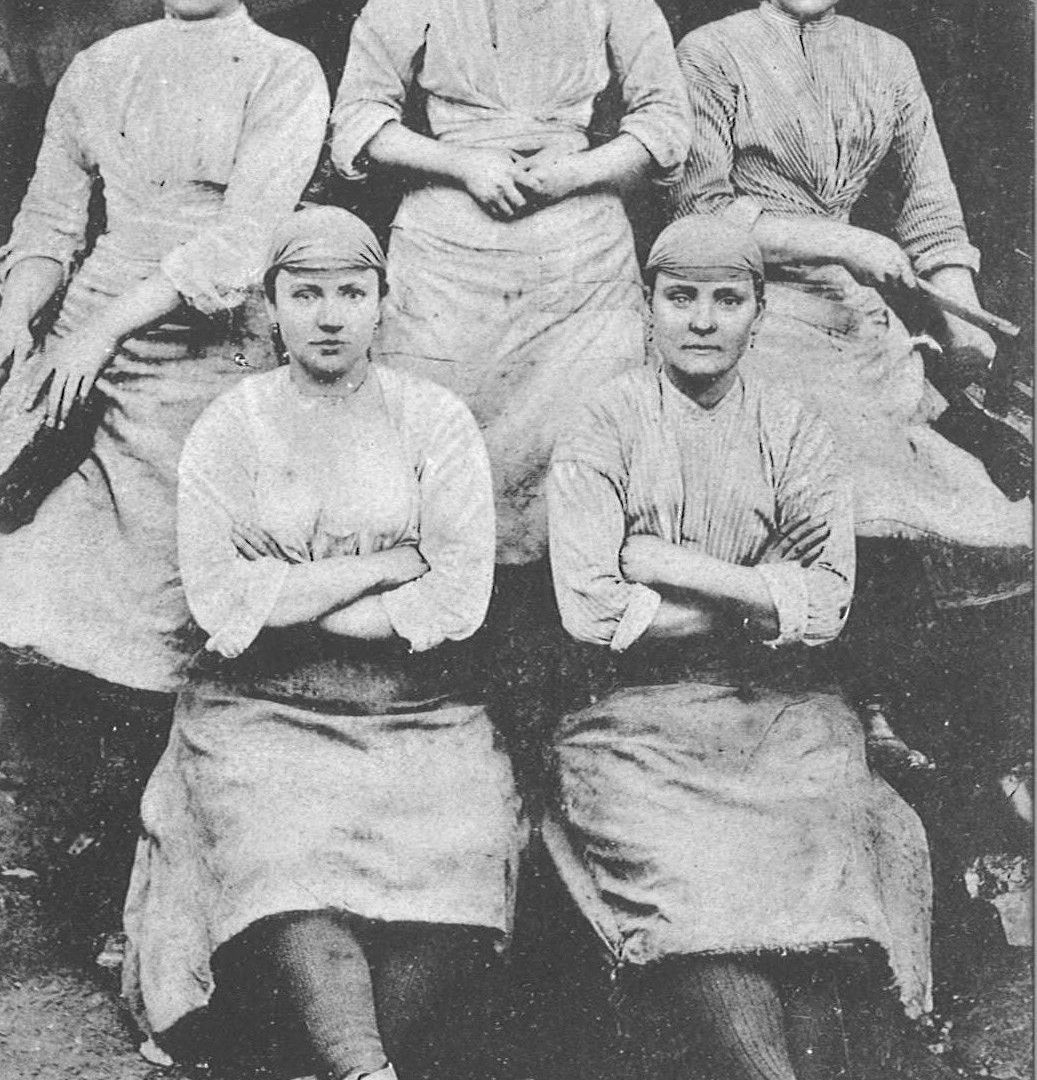Voices in the Coalshed: Pit Brow Lass

Highbrow, low brow or pit brow?
What image comes to mind when you think of a coal miner? A woman? A five-year-old boy? Maybe not, but it did happen.
In 1842 the Coal Mines Act was passed; this new law stopped all women and children under 10 years of age from underground working. However, the Mines Act did not forbid girls and women working on the surface of the mine so many women went on to work at the pit head (or brow) at the shaft top, taking on tasks above ground when the men went underground.
These women became to be known as Pit Brow Lasses. Brow meaning top of a rise or hill, this was a Lancashire term, and the words Brew or broo were also used in that part of England. In other parts of the country like Cumbria at Whitehaven Haig Pit they were called Screen lasses, screen being the area for cleaning and sorting the coal at the Pit Head. In Cornwall and Devon at the tin mines women were referred to as ‘count house woman or ‘Bal Maidens’, the word Bal being ancient Cornish for mining place. The term pit bank women was used in County Durham and In Wales they were known as Tip Girls. Each name showing a different variation on the term used to refer to the surface.
Many women worked a 10-hour shift and strength was needed, tasks included loading wagons and moving coal onto tables to be sorted and cleaned. They wore sturdy boots or clogs, trousers covered with a skirt and apron, and headscarves to keep the dust and dirt from their hair. Their involvement continued until the 1960s. You can discover more in the Museum’s Victorian gallery.
This week’s Voices in the Coalshed post was researched and written by our remote volunteer Tracey. How does Tracey volunteer remotely? She researches and writes her contribution from home and submits by email. If you would like to join Voices in the Coal Shed, please get in touch with voicesinthecoalshed@gmail.com